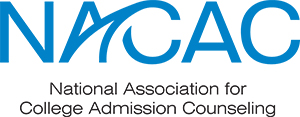Since June 2024, ACT, Inc., (ACT) has been slowly trickling out information about upcoming changes to its namesake test. A shorter test with fewer questions and an optional Science section, the Enhanced ACT promised to align the ACT more with the digital SAT, allowing for a more accessible and streamlined testing experience in both paper-based and digital formats. We’ve detailed these changes below in order to contextualize them within the broader testing landscape and explain how these updates to the ACT will impact your testing plans for the years ahead.
Table of Contents:
- Why is the ACT Exam Changing in 2025?
- What is the Enhanced ACT Exam? Changes & Updates Students Need to Know
- What's Happening with ACT Scores and Score Reporting?
- When Are Changes Going into Effect?
- Do Exam Changes Impact How to Study for the ACT?
- Final Advice for Students in Classes 2026, 2027, and Beyond
Key Takeaways:
- In response to standardized test changes, the new Enhanced ACT, launched in April 2025, aims to modernize the test and better compete in today’s testing landscape.
- What's new with the Enhanced ACT? A shorter test, fewer questions, an optional Science section, and a digital format.
- Content and question styles remain largely unchanged, but fewer questions means more weight per question and less opportunity for students to round up scores.
- Students in the Class of 2026 should stay the course with their current test prep. Since all ACT exams—both paper and digital—will transition to the Enhanced ACT by September 2025, students in the Class of 2027 and beyond should prepare specifically for the Enhanced version and take free diagnostic tests to determine whether the ACT or SAT is the better fit.
Why is the ACT Exam Changing in 2025?
In 2016, ACT enjoyed a victory of sorts: for the first time in the history of American standardized testing, more students took the ACT than the SAT for the purposes of college matriculation. States and districts all over the country had adopted the ACT as an exam requirement for high school graduation, and students found it more accessible than the SAT, which, at the time, was a 10-section, three-subject behemoth that ran for nearly four hours.
Of course, that same year, the College Board revamped the SAT and PSAT, drawing it down to a three-hour, four-section test that afforded students much more time per question and had fewer questions, to boot. Until 2020, roughly 1.9 to 2.2 million students took either the SAT or the ACT for college admissions purposes. But since the start of the pandemic–and a brief, steep drop in the total number of test takers- the College Board returned to dominating the testing landscape. A surprising 1.97 million students took the SAT in 2024, returning to pre-pandemic levels despite test-optional policies being adopted by most major US colleges and universities. The ACT, by contrast, never really recovered its footing: 1.4 million students took the ACT in 2024, tracking with its lowest levels in over a decade.
Driving this trend was the College Board’s decision to further shorten the SAT to 98 total questions in 2.5 total hours, against the ACT’s classic 215 question battery and 3.5 hour runtime. Students and school districts resoundingly made their preferences known. Even though test-takers often perform equally well on both exams, the SAT simply looks and feels much easier than the current version of the ACT, leaving ACT, Inc., with little choice but to update its core exam structures for the first time in decades.
In point of fact, up until this year, the ACT remained the sole mass-scale standardized test that had not become shorter, gone digital, or both. The GRE, GMAT, and LSAT are all significantly shorter than they once were, featuring fewer questions than ever before. In many ways, it looks like the pandemic and its many aftereffects caught the ACT flat-footed, and the organization is only now playing catch-up.
It has yet to be seen if the proposed changes to the ACT will alter ACT, Inc’s fortunes, but if test-takers are looking for a leaner version of the exam–featuring many of its classic question types and stylization–one has now arrived. In April 2025, ACT rolled out the digital version of the Enhanced ACT, testing the waters with an expanded digital offering and featuring a test that tops out at two hours and 131 total questions (or 2 hours and 40 minutes and 171 questions when including the optional Science section). Below, we’ll explore what has changed, what has remained the same, and how these changes will impact a student’s preparation for the Enhanced ACT.
What is the Enhanced ACT Exam? Changes & Updates Students Need to Know
The biggest changes coming to the ACT are structural and speed-related rather than content-driven. The ACT Core–the English, Math, and Reading sections will comprise the three required components of the exam. Clocking in at a speedy two hours–35 minutes for English, 50 minutes for Math, and 40 minutes for Reading–the ACT won’t exactly feel breezy, but it is now shorter even than the more popular SAT. These core sections will feature 131 total questions–50 English, 45 Math, and 36 Reading–making the test a little bit more slowly paced than the current version of the exam. The optional Science section adds 40 minutes and 40 questions to the ACT, rendering it fairly comparable to the current Science test (35 minutes for 40 questions).
We test-drove the Enhanced ACT during the April 2025 national test date and were happy to find that the ACT’s content and question stylization remained largely unchanged. Though there were fewer questions of all main types, the questions themselves, their primary focus, and the material they covered were all very similar to what is currently found on the ACT.
The notable differences between the current ACT and the Enhanced ACT were more related to proportion than any other salient characteristic. Within the English section, the ACT now features fewer questions focused on Conventions of Standard Written English (traditionally, what we think of as standard rules of grammar) and, proportionately, more questions focused on the expression of ideas and clarity of language. By extension, the Math seemed to feature fewer questions focused on precalculus and, proportionately, more questions focused on Algebra I & II, Geometry, and Statistics and Probability. The Enhanced ACT Reading section seemed in many ways the least changed, featuring four similarly themed passages relative to those found on the current ACT, but with nine questions per passage instead of the traditional 10. All of this suggests that a student preparing for the current ACT would be fairly well versed in the kind of material found on the Enhanced ACT.
Interestingly, the biggest changes to the ACT are those that can’t be spotted on the test itself. Up to 10 questions per section are unscored experimental questions that are not factored into a test-taker’s score. These represent questions that the ACT is testing for reliability and validity and may be featured on a future exam. Test-takers have no way of knowing if the questions they work through are going to factor into their scores, but these experimental questions represent a large proportion of the total questions on the exam itself.
What's Happening with ACT Scores and Score Reporting?
Nominally, nothing has changed about the way the ACT is scored. It will still feature its time-tested 36-point scale from 1 to 36, where 1 is the low and 36 is the high. Each section will feature this same scale, and a student’s composite score is an average of the three Core subjects (English, Math, and Reading). Notably, even if one takes the Science section, the Science score will not be factored into the ACT’s main composite.
However, with dramatically fewer questions that count within the ACT’s main subjects, scoring will be affected in ways that most test-takers cannot immediately appreciate. For example, on the current ACT, there are 75 English questions (against the 50 total on the Enhanced ACT) that factor into one’s English score. With only 36 total increments on the ACT scoring scale, it is possible to get a lot of questions wrong on the current ACT English section and see minimal impact to one’s total score. Typically, one can get 2-3 total questions wrong and still receive a perfect 36; up to 10-12 questions wrong and still get a 30; and up to 15 wrong and still get a 27. If 75 questions feels burdensome, the net positive of a test with a ton of questions is that getting any one question wrong has little effect on the outcomes. On the Enhanced ACT, there are 50 total questions, but only 40 of them will be factored into one’s test performance. This would indicate that any one question will have a much more measurable influence on one’s score.
This has been the case with the SAT, and it has represented a notable stumbling block for all test takers on that exam (which features both fewer questions and a much wider scoring range). Sure, the SAT and Enhanced ACT both feature fewer questions in more easily digestible chunks. However, a standardized test that is easier for everyone is really easier for no one, as it becomes that much harder to beat the curve and outperform one’s peers.
Moreover, there is one other odd drawback for those taking the Enhanced ACT vs the traditional version of the test. Classic ACT composite scores are an average of the four major subjects. Notably, if the average score composite ends in a decimal of .5 or .75, those scores round up. So, if a student earns 25’s on the English and Math and 26’s on the Reading and Science, the average of those four scores would be [25 + 25 + 26 + 26] 4 = 25.5. That 25.5 rounds up to a 26. As such, there is an implicit benefit to test-takers who are scoring between those whole-number increments. Notably, students who earn two 35s and two 36s on the four sections of the current exam will earn a 36, even though their actual composite would be a 35.5, and they did not receive perfect scores on half the exam’s sections. That is not a knock on any test taker earning scores like those, but rather an example to highlight the ways in which the current ACT scoring scale advantages present-day test takers.
On the Enhanced ACT, the composite will only be calculated from three sections, which means that if a student receives a ‘decimal score’- a score ending in .33 or .66 repeating, in the case of the enhanced ACT–only one would result in a round-up scoring bump. In sum, we can observe how all of the changes that make the ACT more appealing and seem more accessible actually create a test that may be more difficult.
.png?width=761&height=104&name=Screenshot%20(16).png)
With respect to score reporting, ACT is deferring to colleges and universities on all decision-making. Many schools have already announced that they will not require the optional Science section score at all, which will allow students to take a version of the Enhanced ACT that best fits their skill set. Moreover, most universities are maintaining a flexible policy with respect to superscoring across the Classic and Enhanced ACT–the ability to cherry-pick one’s best sections from different test dates to create an optimal super composite–allowing prospective students to use section scores from distinctly different exam types. These policies are in line with those that were adopted by universities when the SAT changed in 2015 and again in 2024.
As a function of all of this, the ACT has made the reasonable claim that not much has changed with respect to ACT scoring, though when we dig into the details, we find that much has changed in small, meaningful ways.
When Are Changes Going into Effect?
The paper-based ACT will continue to exist in its current form for the remaining test dates in June and July 2025. The digital ACT is now the Enhanced ACT. Starting in September 2025, both the paper-based and digital versions of the ACT will be the Enhanced version thereof.
It is worth noting that all school-based ACT’s–those administered by a district during a school day–will be in the test’s current form until the Spring of 2026 to fulfill ongoing contracts between ACT, Inc., and those districts.
What do colleges REALLY care about? Sign up for our mailing list and get weekly advice and breaking news from top college admissions experts!
Do Exam Changes Impact How to Study for the ACT?
Students now have a surprising variety of choices to make in terms of what kind of ACT they will take, with no fewer than 8 different variations of the exam available to all test takers. Students will be able to choose between paper and digital administrations, featuring the ACT’s Core sections (English, Math, Reading), ACT Core + Science, ACT Core + Science + Writing, and finally ACT Core + Writing. Practically no colleges or universities require the Writing section, and very few seem inclined to require the Science section, either. This suggests that a majority of ACT test takers will feel compelled to take the leanest version of the Enhanced ACT, given that the payoffs of a strong Science score would be limited to those who already have strengths in that particular area.
For now, students will be able to more easily familiarize themselves with the Enhanced ACT in early May when the ACT releases its newly updated Official ACT Guide (often referred to as The Big Red Book). Around that time, ACT will also release its free Preparing for the ACT guide, which it updates on an annual basis and provides students with a PDF of the exam that reflects its present-day difficulty. As the ACT administers more Enhanced versions of the exam, all test preparation organizations will also be able to better meet the needs of students preparing for the exam, providing more realistic practice from month to month.
Students who take a version of the ACT in its current form would have a fairly reasonable sense of what the Enhanced version of the exam might look like in terms of the exam’s question types, stylization, organization, and difficulty. Looking at side-by-side comparisons of a given ACT English or Reading passage or Math problem on both the Classic and Enhanced ACT’s, one would hardly notice any major differences between the two. The Enhanced ACT does allow for more time per question and is notably shorter than the current test, but what a student needs to know to take the Enhanced ACT comfortably is no different than what a student would need to know for the current version of the exam.
If a student is considering taking the Enhanced ACT in its digital form, our very strong advice is to practice in the medium of the exam itself. There is currently one Enhanced Digital Practice ACT available to test takers, with more to come hereafter. Separately, ACT, Inc. has made a lot of its material available in digital form over the years, though none of it quite matches the interface of the Enhanced ACT’s digital format. Check out some of the ACT’s free materials here, with free quizzes to try your hand at reasonable facsimiles of Enhanced ACT material here. Finally, if you have an ACT account, log in to your dashboard at www.myact.org to find still more free web-based materials for your perusal.
Final Advice for Students in Classes 2026, 2027, and Beyond
For students in the Class of 2026, our best advice is to stay the course with the test you’re currently preparing for. There are SAT test dates in June, August, September, and October this year for those who are already preparing for the SAT. For those who are currently preparing for the paper-based ACT, there are two remaining paper-based test dates in June and July in its current format. Our best recommendation for those in the Class of 2026 is not to switch gears now unless there is a strong reason to do so.
If you are a soon-to-be rising senior and may still be taking the ACT in September 2025, take a practice Enhanced ACT if it makes sense to do so. Members in the Class of 2026 are in the unusual position of potentially taking two different versions of the ACT, but, as noted above, that may not put those students at a disadvantage given how similarly the current and Enhanced ACT’s are stylized and structured.
For those in the Classes of 2027 and beyond, the Enhanced ACT will be the only ACT you’ll likely ever have to consider. For current sophomores, finish your academic year on a high note and take a breather once the academic term closes out. At the start of the summer, take a practice Digital SAT and Enhanced ACT (in either digital or paper-based formats) to see which test feels like the best fit for you. Using those diagnostic test scores (like Collegewise's!) as a starting point, consider your end goals for testing–a score you’re hoping to achieve, a school you’re hoping to apply to–and construct a study plan to match your goals.
About Us: With more than twenty years of experience, Collegewise counselors and tutors are at the forefront of the ever-evolving admissions landscape. Our work has always centered on you: the family. And just like we’ve always done, we look for ways for your student to be their best self - whether in the classroom, the applications, or in the right-fit college environment. Our range of counseling, test prep, academic tutoring, and essay management, all with the support of our proprietary platform, lead to 4x higher than average admissions rates.



/Blog%20CTAs%20(1).png?width=600&height=200&name=Blog%20CTAs%20(1).png)
/Blog%20CTAs%20(2).png?width=600&height=200&name=Blog%20CTAs%20(2).png)
/Webinar%20blog%20CTA.png?width=600&height=200&name=Webinar%20blog%20CTA.png)



